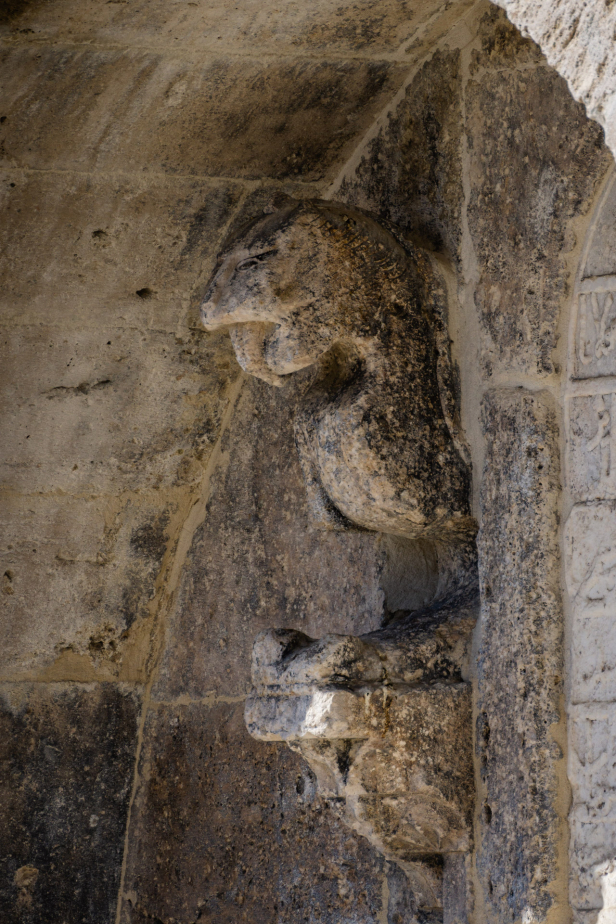Hanabad Çardak Han
Çardak Hanabad Han
/ By Josh
Cost: Free
(though access to the interior is restricted)
Great for: Seljuk History, Silk Road, Seljuk Architecture, Caravanserai
Commonly known as Çardak Han, this caravanserai is also referred to as Hanabad or Han-ı abad. The name Çardak is taken from the modern name of the village.
Commissioned by Esedüddin Ayaz in the 13th century during the rule of Alaeddin Keykubad I, Çardak Han was built to extend Seljuk control over the Aegean.
Though trade roads had been well established in this area for thousands of years (The Persian Royal Road (c. 500 BC) passed parallel to the north on its way to Sardis), the Seljuks breathed new life into the routes that they took into their territory by building Caravanserai, or fortified inns along it to protect the caravans, and even to be used as forts by soldiers on the frontiers. At the time of its construction Çardak Han was near the eastern frontier of Seljuk territory and served to connect the region back along the roads leading to the Seljuk heartland centered on Konya.

In the 15th century, a couple centuries after the decline of the Seljuks, the brutal conqueror Tamerlane would station soldiers here after his victory at the Battle of Ankara over the Ottomans.
The Caravanserai at Çardak was built in a classic Seljuk style: A broad forecourt entered by a grand gateway, and a smaller covered hall, entered through the forecourt. Sadly, much of the forecourt has been destroyed, the outer walls in ruin and the inner walls almost completely gone though restoration work (completed early 2020) has helped restore a sense of the size and shape of the original structure.
The crown portal, usually the most striking part of any Seljuk building, has been lost. British traveller Gertrude Bell, who took thousands of photographs during her years of travel throughout the Ottoman Empire and Middle East in general seems to have passed by Çardak Han on her way to Dinar without stopping to take a picture in 1907 and so we know very little about when this doorway was lost and what it may have looked like before.
The outer forecourt was built off-centered from the rest of the Han. The exterior walls protruding out further on the left than on the right so as to make room for a larger covered porch compared to the enclosed rooms on the right. The enclosed space of the courtyard however was built symmetrical to the covered hall entrance.
Subscribe to The Art of Wayfaring

The crown portal to the covered hall is still in fair condition, with its kitabe inscription still clear, with a pair of lions rearing out of the wall on either side, their tongues lolling out of their mouths. While access to the interior is restricted there are images of fish and bulls on the walls. The covered hall consists of five rows of vaulting rather than the typical three and is supported by irregular buttresses on the exterior. There is no particularly obvious spoila, or re-used architectural elements, on the exterior of the caravanserai.
Outside the han, on the uphill side are the remains of a much-neglected cemetery, the headstones beaten blank by weather and lichen.
How To Get There
Public Transit
There are busses running between Afyon and Denizli via Dinar that will be able to let you off in Çardak. If you are not in either of those cities Dinar may be your best place to head towards to make a connection from there towards Denizli.
Car
The town of Çardak sits just on the Denizli side of the Afyon – Denizli border, along the Denizli – Afyon Highway (D320) that runs via Dinar. Coming from Denizli head east along the Denizli – Afyon Highway until you reach the town and take your first left into the town proper following the brown signs marked for Çardak Han. Çardak is 55 kms east of Denizli.
From the direction of Afyon (you’ll pass through here coming from Konya, Ankara, and Istanbul as well) head west out of the city on the Denizli – Afyon highway (E96). Turn south just beyond the city to stay on the Denizli – Afyon Highway which here becomes the D650. Then, 84 kilometers later take the junction to the right to the town of Dinar. From Dinar follow the highway west towards Denizli, turn right into the town of Çardak following the brown signs marked for Çardak Han. The han will be on your right just at the top of the hill. Total distance from Afyon to Çardak is 165 kms, from Dinar 75.
For more about car rental and driving in Turkey make sure to read our full drivers guide.
Where To Stay
There are rather few hotel options in the immediate area. The town of Bozkurt (5 kms) has a hotel, as does the town of Dazkırı(23 kms). Further afield in Dinar (75 kms) you will find a couple of others. All of these are very basic hotels. If you want something a little nicer you will need to head to the City of Denizli where there are lots of options at a range of prices and qualities.
Other Tips
Planning on visiting Çardak Han? Make sure to check out what other sights are in the region!
Subscribe to The Art of Wayfaring
Have any tips or info to add? Spot any mistakes? We’d love to hear about it.

